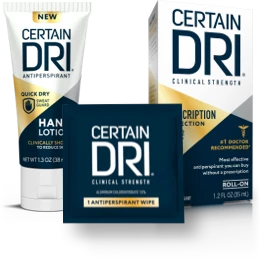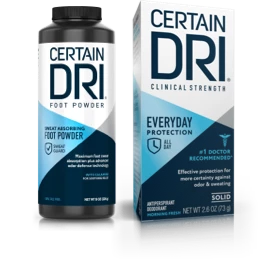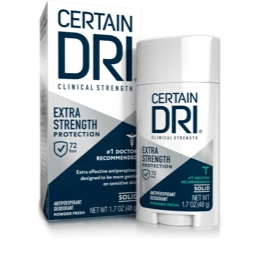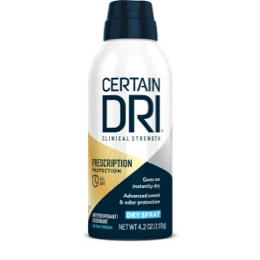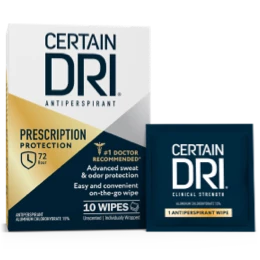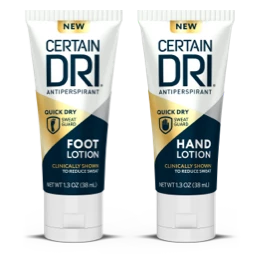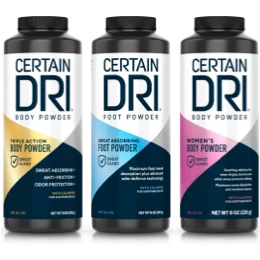18 Reasons Why Antiperspirant Ingredients Can Be Confusing
Summer’s coming fast and furious and, for many of us, so is surge sweating. So, which antiperspirant should you choose? That depends on a number of things including where you sweat, how much you sweat, and how sensitive your skin can be.
To help you narrow down your choices, here’s useful info about the key active ingredients in antiperspirants.
Aluminum salts are the most common active ingredients in antiperspirants and have been used to help control sweat and body odor for more than 80 years. And while it may seem weird to be putting a metal salt on your skin, keep in mind that aluminum is very common in our environment (it’s the third most common element on Earth) and is nontoxic (occurring naturally in soil and water and in many foods). There are also a lot of different types of aluminum.
In fact, the U.S. Food and Drug Administration (FDA) has approved 18 different types of aluminum salts for use in over-the-counter (OTC or non-prescription) antiperspirants. So, if you’re looking at the active ingredients of antiperspirants and feeling a little confused – just know that there are 18 reasons for that.
But before we go all-in on aluminum, let’s remember how antiperspirants work and how you can help them to work best.
Always apply your antiperspirant to completely dry skin and before bedtime. If your skin is wet, your antiperspirant will mix with that wetness and slide off your skin instead of into your sweat ducts like it’s supposed to. Applying at night is important for the same reason: typically, you don’t sweat much during sleep (your body temperature is lower at night) so you won’t sweat off your antiperspirant and it will have about eight hours to get into your sweat ducts and do its job.
That job is to form plugs that block sweat from emerging onto the skin. Antiperspirants contain a form of aluminum to provide that sweat-blocking power. These aluminum-based compounds are the first ingredients on the product’s label. They work by getting into the sweat ducts and causing them to temporarily close or “plug” up. Depending on the antiperspirant you use, the plugs may last a day, a few days, or longer before you need to reapply your antiperspirant. The aluminum compounds found in antiperspirants also minimize body odor by inhibiting the bacteria that feed on sweat and cause odor in the process.
The FDA requires that OTC antiperspirants contain no more than 15 to 25 percent of the active ingredient, depending on what it is.
Here’s the FDA’s list of approved OTC antiperspirant active ingredients:
- Aluminum chloride up to 15 percent, calculated on the hexahydrate form, in an aqueous solution nonaerosol dosage form.
- Aluminum chlorohydrate up to 25 percent.
- Aluminum chlorohydrex polyethylene glycol up to 25 percent.
- Aluminum chlorohydrex propylene glycol up to 25 percent.
- Aluminum dichlorohydrate up to 25 percent.
- Aluminum dichlorohydrex polyethylene glycol up to 25 percent.
- Aluminum dichlorohydrex propylene glycol up to 25 percent.
- Aluminum sesquichlorohydrate up to 25 percent.
- Aluminum sesquichlorohydrex polyethylene glycol up to 25 percent.
- Aluminum sesquichlorohydrex propylene glycol up to 25 percent.
- Aluminum zirconium octachlorohydrate up to 20 percent.
- Aluminum zirconium octachlorohydrex gly up to 20 percent.
- Aluminum zirconium pentachlorohydrate up to 20 percent.
- Aluminum zirconium pentachlorohydrex gly up to 20 percent.
- Aluminum zirconium tetrachlorohydrate up to 20 percent.
- Aluminum zirconium tetrachlorohydrex gly up to 20 percent.
- Aluminum zirconium trichlorohydrate up to 20 percent.
- Aluminum zirconium trichlorohydrex gly up to 20 percent.
Interestingly, what an antiperspirant’s advertising and label can say is also dictated by the FDA, based on the percentage of sweat-reduction the antiperspirants have demonstrated in studies. Note that to be called an antiperspirant in the first place, the FDA requires the product to have demonstrated at least 20 percent sweat-reducing power):
- Products that demonstrate 20 percent sweat-reduction over a 24-hour period: labels/ads may state “all day protection,” “lasts all day,” “lasts 24 hours,” or “24 hour protection.”
- Products that demonstrate 30 percent sweat-reduction: may state “extra effective.”
- Products that demonstrate 30 percent sweat-reduction sustained over a 24-hour period: may state both of the above (ex. “24 hour extra effective protection”, “all day extra effective protection,” “extra effective protection lasts 24 hours,” or “extra effective protection lasts all day.”)
So what are the differences between the different aluminum compounds? Perhaps only a chemist would appreciate them all but here are a few highlights:
- Aluminum zirconium – newer form that some people find to be less irritating to the skin and works all day. It is the active ingredient in in Certain Dri Everyday Strength Clinical(at 20% concentration). Aluminum zirconium is a partially neutralized salt. This reduces the amount of HCl produced on the skin and since it’s HCl that is blamed for skin irritation, this is a benefit to those with sensitive skin. Plugs in the sweat ducts are more superficial.
- Aluminum Sesquichlorohydrate – An inorganic polymer that forms relatively large poly-aluminum complexes. This active ingredient is more gentle on sensitive skin, can last for days, and is found in Certain Dri Extra Strength Clinical.
- Aluminum Chloride – A simple inorganic salt compound and the strongest ingredient available. It’s used in prescription antiperspirants at higher concentrations but can be found in over-the-counter antiperspirants like Certain Dri Prescription Strength at a 15% concentration. Aluminum chloride is a preferred ingredient for extreme sweating because it works differently than other aluminum compounds. It’s a smaller molecule and can therefore penetrate the sweat duct more effectively than larger aluminum compounds – reducing sweat at a deeper level.

